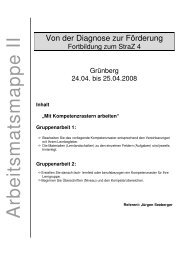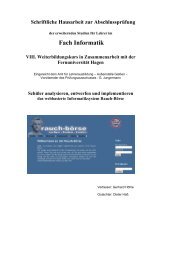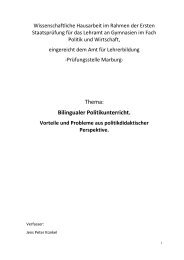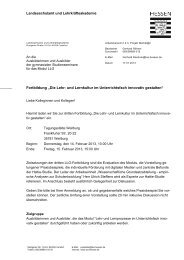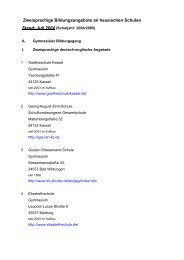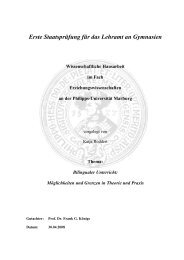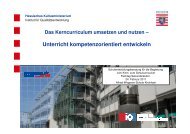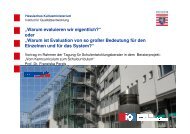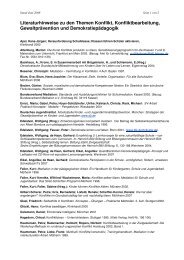PROFILING EUROPEAN CLIL CLASSROOMS
PROFILING EUROPEAN CLIL CLASSROOMS
PROFILING EUROPEAN CLIL CLASSROOMS
You also want an ePaper? Increase the reach of your titles
YUMPU automatically turns print PDFs into web optimized ePapers that Google loves.
LANTIX<br />
Develop Plurilingual Interests and Attitudes<br />
European countries differ considerably with respect to the ability of citizens to use languages<br />
other than the mother tongue. This is a reflection of not only language policy but also<br />
attitudes towards the relevance and importance of learning languages at the grassroots.<br />
Language policies and political rhetoric may influence attitudes towards language<br />
learning, but it is also increasingly grassroots opinion that is decisive. Such opinion is<br />
often based on peoples’ perception of what is advantageous for young people and<br />
their future needs.<br />
A critical factor here relates to whether people believe that European working life<br />
communication will be increasingly dominated by one single language.<br />
There is a view that a dominant ‘lingua franca’ type language can be used, for example,<br />
to start <strong>CLIL</strong>, but because the ‘the youngsters will pick it up anyway’, other languages<br />
should be learnt using this approach.<br />
Finally <strong>CLIL</strong> is viewed as positively influencing a young person’s ‘language learning<br />
self-profile’, which can act as a catalyst for developing plurilingual attitudes.<br />
Key <strong>CLIL</strong> Features<br />
➔<br />
➔<br />
➔<br />
There are different attitudes towards the value of being only partially competent in<br />
a language. This focus often involves a learner being able to use different languages,<br />
rather than achieving very high competence in one additional language through <strong>CLIL</strong><br />
If <strong>CLIL</strong> brings positive results in relation to one widely used additional language such<br />
as English or French, then interest groups may be active in exploring possibilities<br />
within a school for the introduction of <strong>CLIL</strong> in other languages<br />
There is a difference between having plurilingual attitudes and plurilingual<br />
competencies. A school can cultivate the attitudes through not only <strong>CLIL</strong> but also by<br />
having ‘languages and communication’ centrally placed within the curriculum<br />
Examples<br />
•<br />
•<br />
Special ‘language schools’ which offer extensive language-related programmes<br />
Vocational and professional education curricula where learners need to learn<br />
languages for specific purposes in different languages<br />
Education is not the filling of a bucket, but the lighting of a fire (William Butler<br />
Yeats)<br />
39



